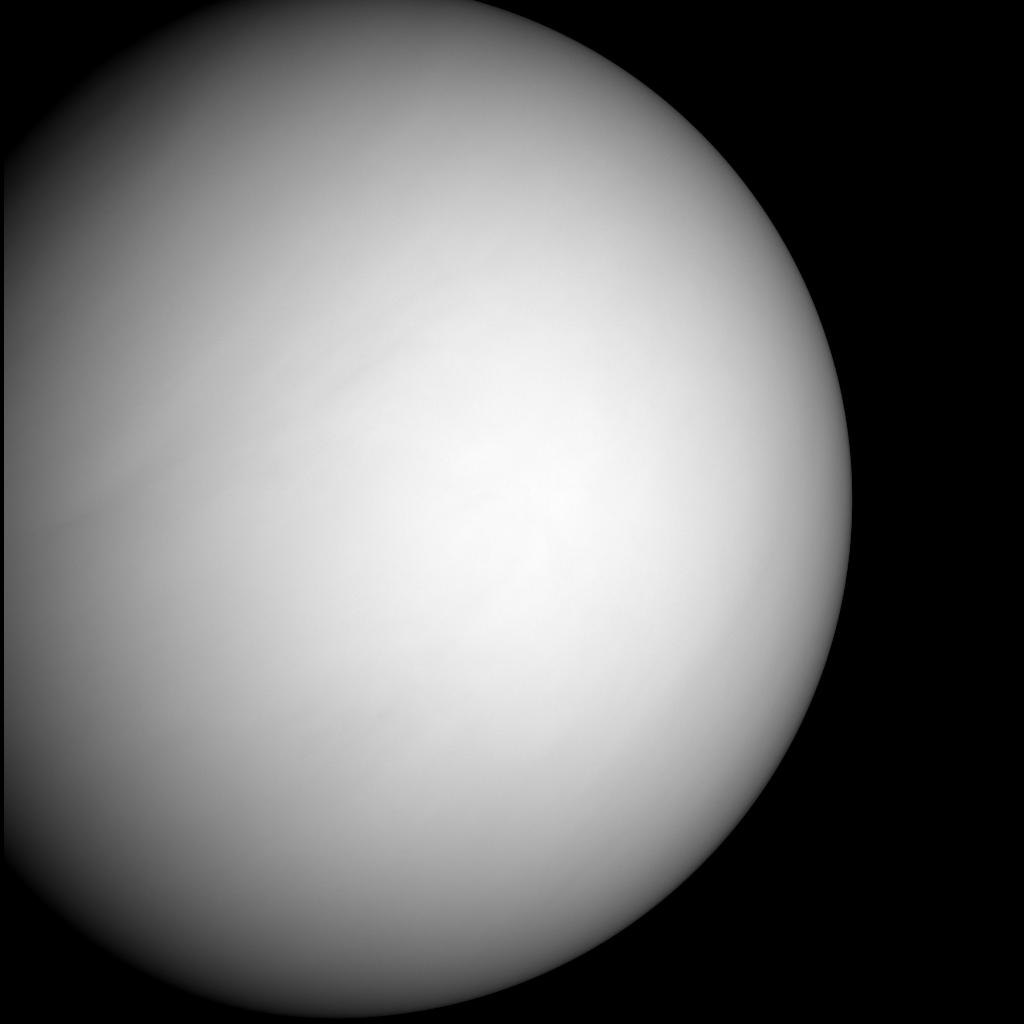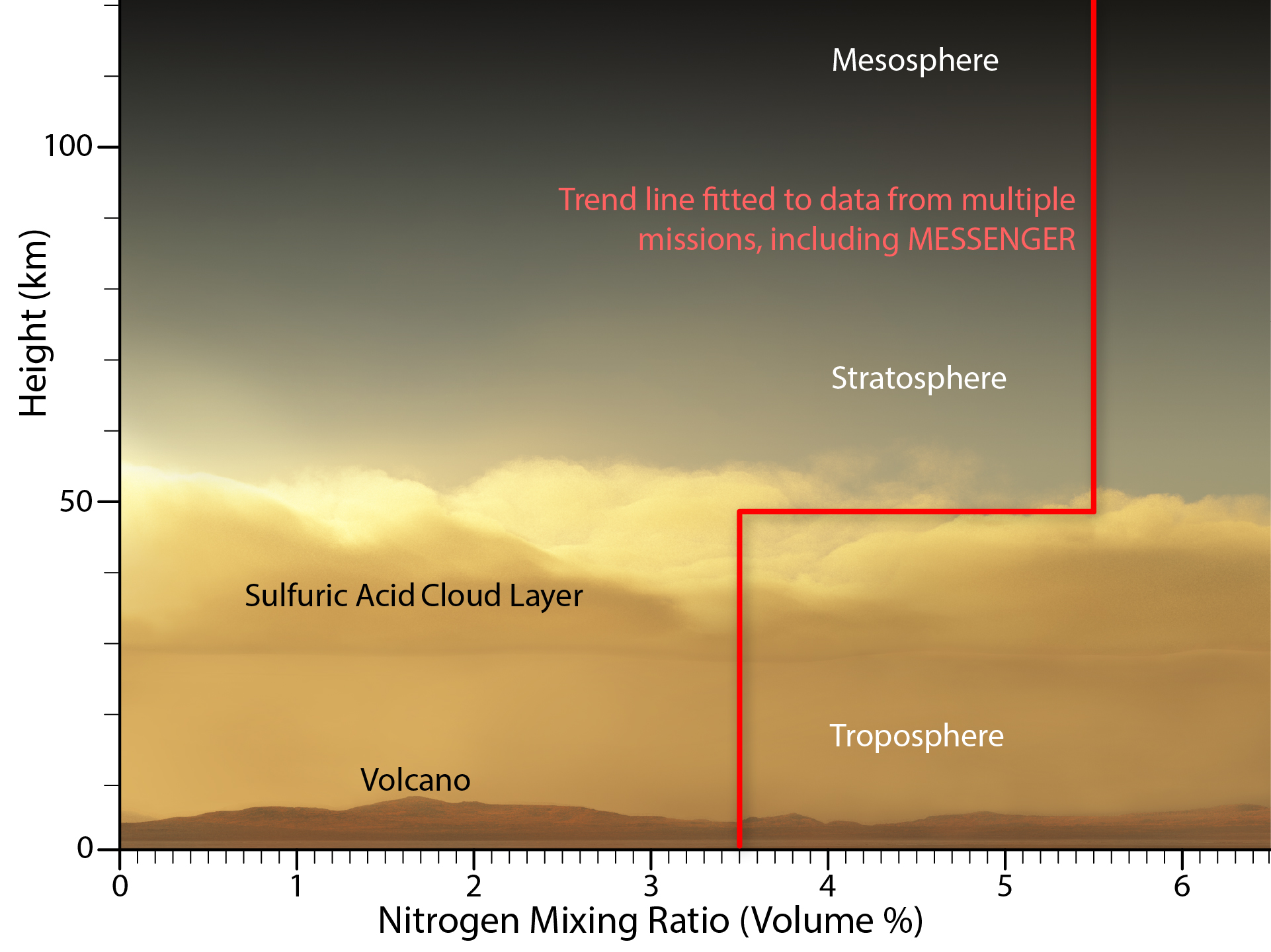Press Release
“Lucky” MESSENGER Data Upends Long-Held Idea About Venus’ Atmosphere
Mon, 04/20/2020 - 12:21
Philosopher Nicholas Rescher once wrote, “Scientific discoveries are often made not on the basis of some well-contrived plan of investigation, but through some stroke of sheer luck.”
For a team of researchers at the Johns Hopkins Applied Physics Laboratory (APL) in Laurel, Maryland, that statement couldn’t be more true.
What started as a dry run to ensure instruments on NASA’s Mercury Surface, Space Environment, Geochemistry and Ranging (MESSENGER) spacecraft worked properly later turned into a 10-year saga that resulted in a chance discovery unrelated to the mission’s target planet, Mercury. It’s about Venus and its atmosphere.
The team reports April 20 in Nature Astronomy that data fortuitously collected by MESSENGER reveals a sudden rise in nitrogen concentrations at about 30 miles above Venus’ surface, demonstrating the planet’s atmosphere isn’t uniformly mixed, as expected. That finding upends an understanding about Venus’ atmosphere that has prevailed for decades.
The story started in June 2007 as MESSENGER sailed above Venus for its second flyby before veering toward Mercury. Mission instrument teams took the opportunity to test their devices and collect data before the real show was set to begin some six months later.
Among the team members was David Lawrence, a nuclear physicist at APL. He was the instrument scientist for MESSENGER’s neutron spectrometer, which detects neutrons set loose into space from cosmic rays colliding with molecules in a planet’s atmosphere or surface. It aimed to find the telltale signs of neutrons coming from hydrogen atoms in water molecules that were suspected (and later confirmed) to be frozen in the crater shadows at Mercury’s poles.
Over Venus, however, Lawrence just wanted to collect some data to verify the instrument was operating correctly. An initial check showed it worked, and the data was tabled.
But in 2010, Lawrence revisited those measurements, this time with Patrick Peplowski, another nuclear physicist at APL. Despite 50 years of sending robotic missions to Venus, including 13 atmospheric probes or landers, a lot of uncertainty about the nitrogen concentration in Venus’ atmosphere, especially between 30 and 60 miles above the surface, remained.
That puzzled Peplowski and Lawrence because nitrogen is the second most abundant molecule floating in Venus’ atmosphere, after carbon dioxide.
“The uncertainty wasn’t necessarily just in the MESSENGER instrument — it could be in the entire planet,” Lawrence said.
Lawrence knew of a 1962 paper, however, that suggested neutron spectroscopy could help determine Venus’ atmospheric nitrogen concentration. Nitrogen is fairly good at scavenging loose neutrons, unlike carbon and oxygen, which are some of the worst. So on Venus, the number of neutrons an instrument detects should depend on the amount of atmospheric nitrogen.
MESSENGER just happened to collect that information.

